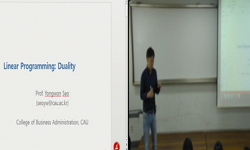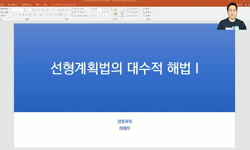Shimming is an important technique in development of nuclear magnetic resonance (NMR) magnets where image resolution is highly dependent on magnetic field homogeneity. Classically, shimming may be categorized into two types: 1) active shimming that in...
http://chineseinput.net/에서 pinyin(병음)방식으로 중국어를 변환할 수 있습니다.
변환된 중국어를 복사하여 사용하시면 됩니다.
- 中文 을 입력하시려면 zhongwen을 입력하시고 space를누르시면됩니다.
- 北京 을 입력하시려면 beijing을 입력하시고 space를 누르시면 됩니다.
https://www.riss.kr/link?id=A82335279
- 저자
- 발행기관
- 학술지명
- 권호사항
-
발행연도
2010
-
작성언어
Korean
- 주제어
-
등재정보
KCI등재,SCOPUS
-
자료형태
학술저널
- 발행기관 URL
-
수록면
1059-1063(5쪽)
-
KCI 피인용횟수
0
- DOI식별코드
- 제공처
- 소장기관
-
0
상세조회 -
0
다운로드
부가정보
다국어 초록 (Multilingual Abstract)
Shimming is an important technique in development of nuclear magnetic resonance (NMR) magnets where image resolution is highly dependent on magnetic field homogeneity. Classically, shimming may be categorized into two types: 1) active shimming that incorporates with extra coils and precise tuning of their currents; and 2) passive shimming that incorporates with pieces of steel placed in a bore of a main magnet and their uniform magnetization under homogeneous external fields. Additional magnetic fields, produced by the coils and/or the steel sheets, compensate original magnetic field from the main magnet in such a way that the total field becomes more homogeneous. In this paper, we developed a passive shimming method based on linear programming optimization. Linear programming is well known to be highly efficient to find a global minimum in various linear problems. We firstly confirmed the linearity of magnetization of ferromagnetic pieces under a presence of external magnetic fields. Then, we adopted the linear programming to find optimized allocation of the steel pieces in the inner bore of a main magnet to improve field homogeneity.
목차 (Table of Contents)
- Abstract
- 1. 서론
- 2. 본론
- 3. 검증 및 자장보정 예
- 4. 결론
- Abstract
- 1. 서론
- 2. 본론
- 3. 검증 및 자장보정 예
- 4. 결론
- 참고문헌
- 저자소개
참고문헌 (Reference)
1 "Resonance Research Inc"
2 A. Belov, "Passive Shimming of Superconducting Magnet for MRI" 5 (5): 679-681, 1995
3 W. H. Press, "Numerical Recipes(Book style)" Cambridge University Press 183-183, 1986
4 Hongbeom Jin, "A study on the design and fabrication of actively shielded superconducting MRI magnet(Book style)"
1 "Resonance Research Inc"
2 A. Belov, "Passive Shimming of Superconducting Magnet for MRI" 5 (5): 679-681, 1995
3 W. H. Press, "Numerical Recipes(Book style)" Cambridge University Press 183-183, 1986
4 Hongbeom Jin, "A study on the design and fabrication of actively shielded superconducting MRI magnet(Book style)"
동일학술지(권/호) 다른 논문
-
- 대한전기학회
- 김진사(Jin-Sa Kim)
- 2010
- KCI등재,SCOPUS
-
원통형 다전극식 정전용량-전기전도도 센서를 이용한 연료전지 차량용 냉각수의 유전특성 평가
- 대한전기학회
- 김재훈(Jae-Hoon Kim)
- 2010
- KCI등재,SCOPUS
-
MLC NAND 플래시 메모리의 셀 간 간섭현상 감소를 위한 등화기 알고리즘
- 대한전기학회
- 김두환(Doo-Hwan Kim)
- 2010
- KCI등재,SCOPUS
-
분포정수회로모델을 이용한 수직 접지전극의 접지임피던스의 분석
- 대한전기학회
- 이복희(Bok-Hee Lee)
- 2010
- KCI등재,SCOPUS






 ScienceON
ScienceON DBpia
DBpia







